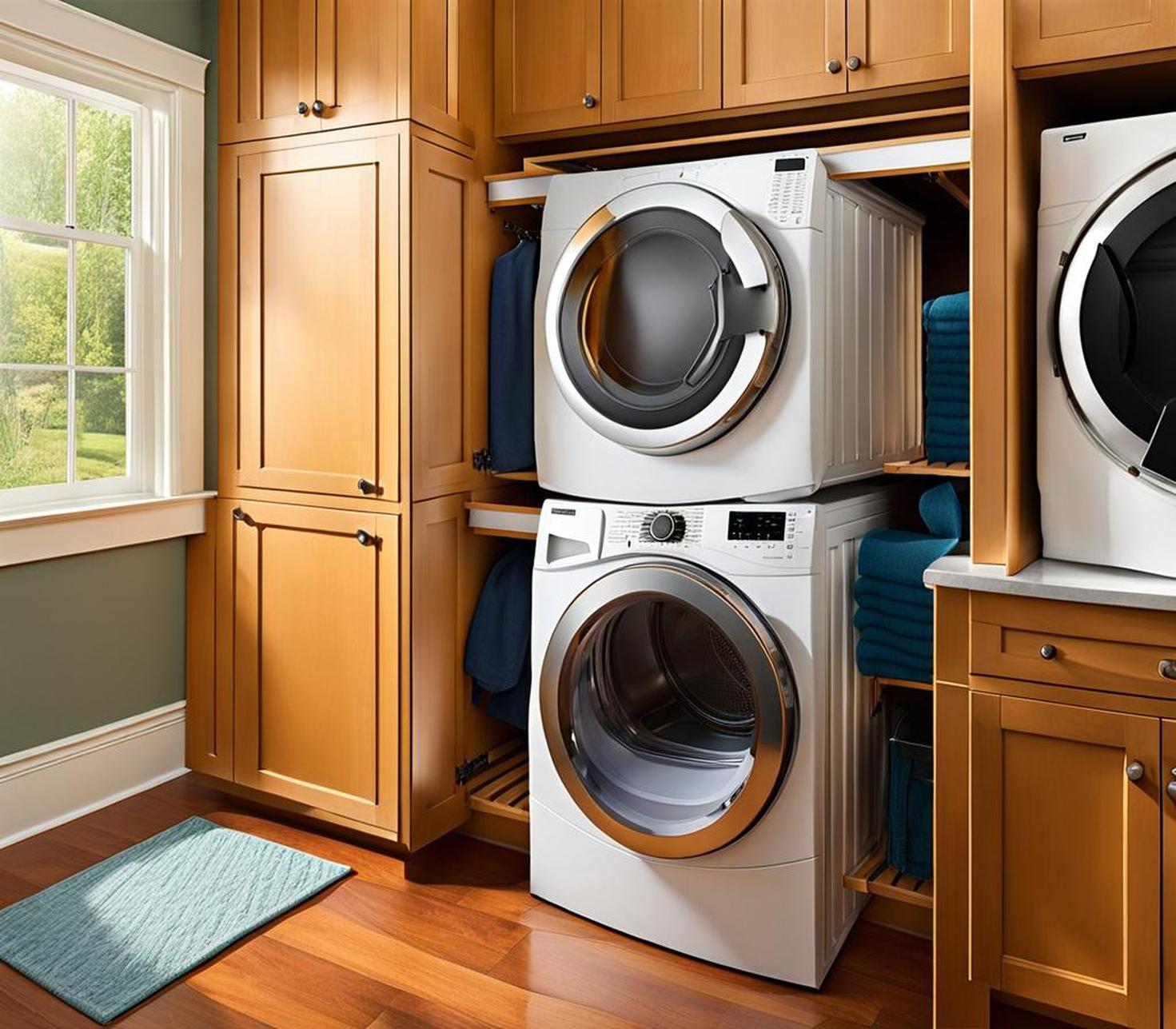Does your freshly laundered clothing come out of the dryer smelling musty and moldy? That unpleasant “mildew” odor means mold and mildew have taken up residence inside your dryer. But don’t hold your nose in despair–you can kick that foul funk to the curb for good.
With some diligent scrubbing, sanitizing, and preventative care, you can restore that fresh-from-the-dryer scent that your laundry deserves.
Detecting the Signs of a Mildewy Dryer
Sniffing out the symptoms of mildew buildup early is key to tackling odor issues promptly. Be on the lookout for these telltale signs:
- A musty, earthy smell emanating from your dryer
- Visible mold or mildew growth on the drum or seals
- Wet spots or moisture buildup inside the dryer
- Lint trap overflowing faster than usual
Trust your nose–if your freshly dried laundry has a faintly muddy aroma, mildew is likely lurking inside your dryer. Addressing the problem before odors become overpowering will make eliminating them much easier.

What Causes Mildew to Grow in Dryers?
Mildew and mold thrive in the warm, humid environment inside clothes dryers. But what factors allow them to take root?
Moisture Buildup
Moisture provides the essential conditions for mildew growth. High humidity in the installation location, insufficient drying of laundry loads, and clogged lint traps can all lead to dampness inside your dryer.
Poor Ventilation
Proper airflow is critical to drying laundry and preventing moisture buildup. A clogged dryer vent hose, restricted outdoor vent hood, or excessively long and twisting vent hose can hinder ventilation.
Detergent Residue and Leftovers
The dirt, lint, and detergent residues that accumulate inside the dryer provide food for mildew. These leftovers stick to the drum, seals, and lint trap–prime real estate for mildew.
How to Thoroughly Clean Mildew Out of Your Dryer
Eliminating mildew requires scrubbing away mold and grime and sanitizing all the affected areas. Here are some of the best cleaning solutions:
Vinegar
The acidic properties of vinegar make it a powerful mildew killer. Start by soaking a towel in undiluted white vinegar, then run a hot cycle with the towel in the empty drum. The heat activates the vinegar to penetrate and clean. Vinegar’s pungent scent also removes musty odors.
Bleach
For a tougher approach, use an all-purpose cleaning bleach diluted with water. Mix 1 part bleach and 3 parts water and use it to wipe down the drum, door, seals and lint trap. Rinse everything thoroughly before running a normal drying cycle. Take safety precautions when handling bleach.
Baking Soda
For a non-toxic option, baking soda absorbs funky odors and lifts away grime. Make a paste by mixing 3 parts baking soda with 1 part water. Use a sponge to scrub this paste over any mildewy areas before rinsing clean.
Vacuuming
Use a vacuum hose attachment to suction away lint and debris inside the dryer drum, ducts and surrounding areas. Focus on crevices where lint accumulates. Thorough vacuuming removes mold spores and food sources.
Steps to Prevent Mildew from Returning
Cleaning up existing mildew is only half the battle–preventing its recurrence is critical for long-term freshness. Follow these maintenance habits:
Clean the Lint Trap Before Each Load
Vigilantly cleaning the lint trap prevents moisture-encouraging lint buildup. Use a soft-bristle lint trap brush each time you empty it. Let the screen fully dry before snapping it back into place.
Leave the Dryer Door Open Between Loads
Keeping the door ajar allows air circulation to dry out any moisture, discouraging mildew growth. Closing wet laundry inside promotes odor issues.
Sanitize Monthly with Vinegar
Make a habit of doing a monthly cleaning with a vinegar-soaked towel to keep the drum and seals fresh. Ounce of prevention equals no pound of mildew cure!
Troubleshooting Mildew Odors That Linger
If musty mildew smells persist despite your best cleaning efforts, the issue may require professional help. Some possible causes include:
- Severely clogged dryer vent ductwork
- Blocked outdoor vent exhaust hood
- Damaged drum or door seals
- Moisture from leaky appliance supply lines
For stubborn odor issues, contact a dryer vent technician who can inspect your ductwork and diagnose any underlying problems contributing to mildew growth.
Never take clothes fresh from the dryer for granted again. With a thorough deep clean and some simple preventative measures, you can stop mildew growth in its tracks. No more holding your nose when you pull clothes from the dryer–just that clean, fresh scent you love.
Stay vigilant against mildew by sticking to regular lint trap maintenance and monthly sanitizing. And remember–leave the door open between loads so your dryer insides stay dry. With a few minor habit adjustments, you can ensure mildew odors are banished for good.
1.
Using a dehumidifier near your dryer can help absorb excess moisture in the air and prevent the humid conditions that allow mold and mildew to grow. Look for an energy efficient model sized appropriately for the room.
2.
Over time, dryer ducts can accumulate lint buildup that blocks airflow and ventilation, leading to mold and mildew growth. Use a long, flexible dryer duct brush to remove lint stuck to your ductwork. Vacuum around vents to capture any remaining lint and dust.
3.
Dryer balls are designed to lift and separate laundry loads, allowing better airflow. This helps laundry dry faster, preventing the excess moisture mold and mildew need to thrive. As an added bonus, wool dryer balls can absorb moisture and reduce static.
4.
For a non-toxic way to remove mildew smells, add a few drops of tea tree oil or lemon juice to a vinegar solution. Soak a washcloth in this solution and run it through the dryer on a hot cycle. The natural anti-fungal and anti-bacterial properties help safely eliminate odors.
